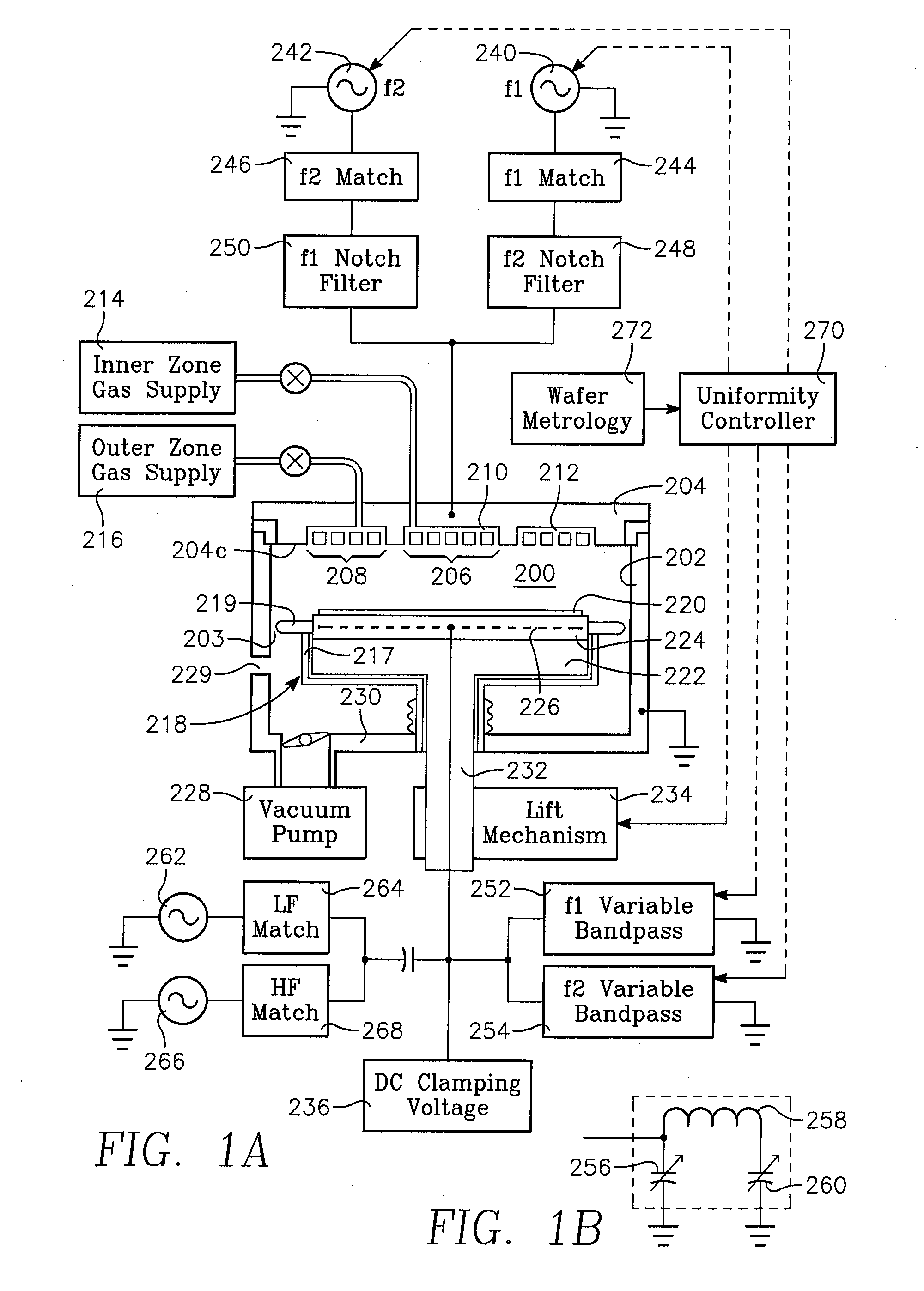Plasma process uniformity across a wafer by controlling RF phase between opposing electrodes
a plasma and opposing electrode technology, applied in the direction of coatings, electric discharge lamps, electric lighting sources, etc., can solve the problems of reducing the uniformity of the rf field, the wafer surface is not uniform, and the process is not uniform, so as to reduce the non-uniformity of the edge-high non-uniformity, increase the current flow, and reduce the current flow
- Summary
- Abstract
- Description
- Claims
- Application Information
AI Technical Summary
Benefits of technology
Problems solved by technology
Method used
Image
Examples
Embodiment Construction
[0026]FIG. 1A is a simplified schematic diagram of a plasma reactor capable of controlling radial distribution of plasma ion density by apportioning capacitively coupled plasma source power among different source power frequencies. The reactor has a vacuum chamber 200 enclosed by a cylindrical side wall 202 and a disk-shaped ceiling 204. The ceiling 204 is both a conductive ceiling electrode as well as a gas distribution showerhead or plate, and will be referred to herein as the ceiling electrode 204. The ceiling electrode may optionally be covered with a conducting, semiconducting or insulating material. The ceiling electrode 204 includes inner and outer zones 206, 208 of gas injection orifices on its bottom surface 204c coupled to respective inner and outer internal gas manifolds 210, 212. Inner and outer zone process gas supplies 214, 216 furnish process gases to the inner and outer manifolds 210, 212. A wafer support pedestal 218 can support a workpiece such as a semiconductor w...
PUM
| Property | Measurement | Unit |
|---|---|---|
| Angle | aaaaa | aaaaa |
| Angle | aaaaa | aaaaa |
| Angle | aaaaa | aaaaa |
Abstract
Description
Claims
Application Information
 Login to View More
Login to View More - R&D
- Intellectual Property
- Life Sciences
- Materials
- Tech Scout
- Unparalleled Data Quality
- Higher Quality Content
- 60% Fewer Hallucinations
Browse by: Latest US Patents, China's latest patents, Technical Efficacy Thesaurus, Application Domain, Technology Topic, Popular Technical Reports.
© 2025 PatSnap. All rights reserved.Legal|Privacy policy|Modern Slavery Act Transparency Statement|Sitemap|About US| Contact US: help@patsnap.com



